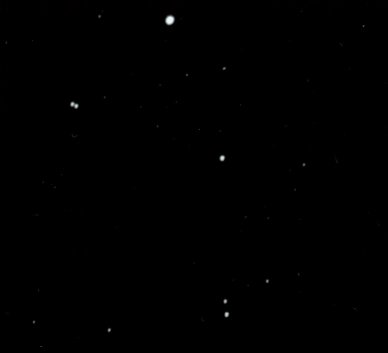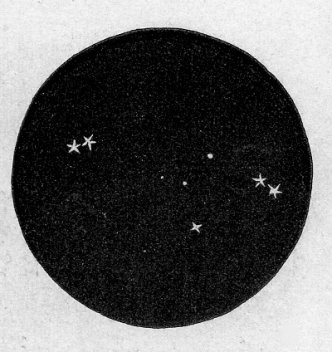

 |
 |
At far left, a closeup view of Vega (the bright star at top) and its surroundings reveals the duplicity of the famed "double-double star" Epsilon Lyrae, which lies down and to the left of Vega (west is up in the picture). The left-hand star of the pair is Epsilon-1, the right hand star Epsilon-2. As seen at near left, each of the two is also double. The stars between the pairs are irrelevant. At far left, Zeta Lyrae is down and a bit to the right of Vega, while the unrelated pair Delta-1 and Delta-2 Lyrae are at bottom center, Delta-2 the brighter. (Far left: J. B. Kaler; near left from W. H. Smythe as revised by G. F. Chambers, A Cycle of Celestial Objects, Oxford University Press, 1881.) |